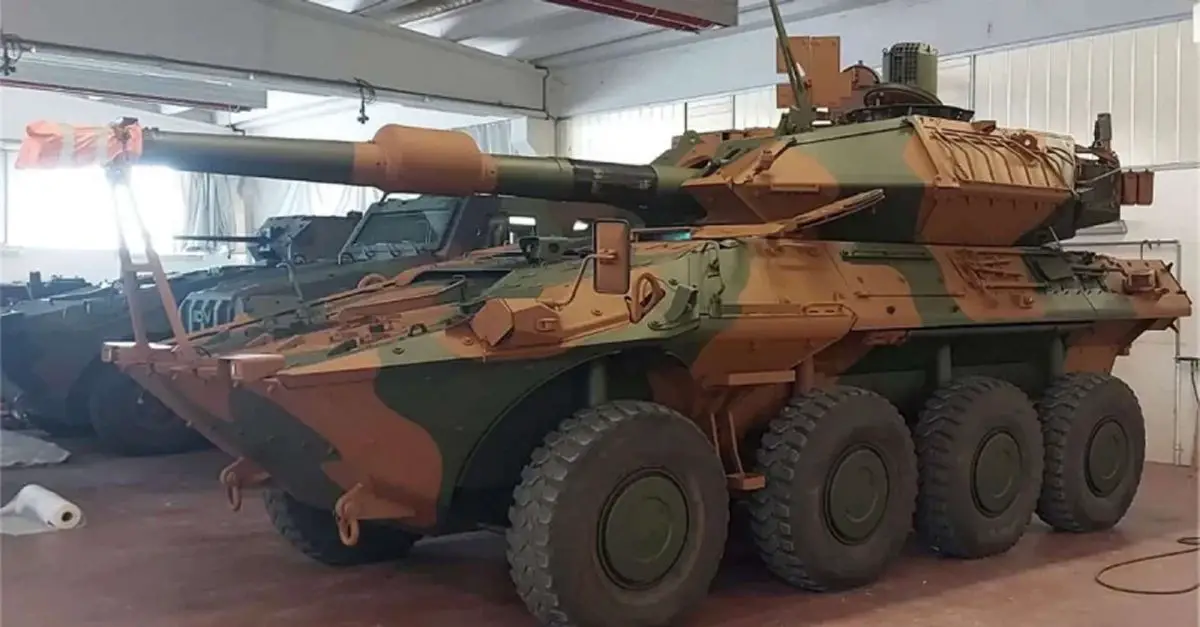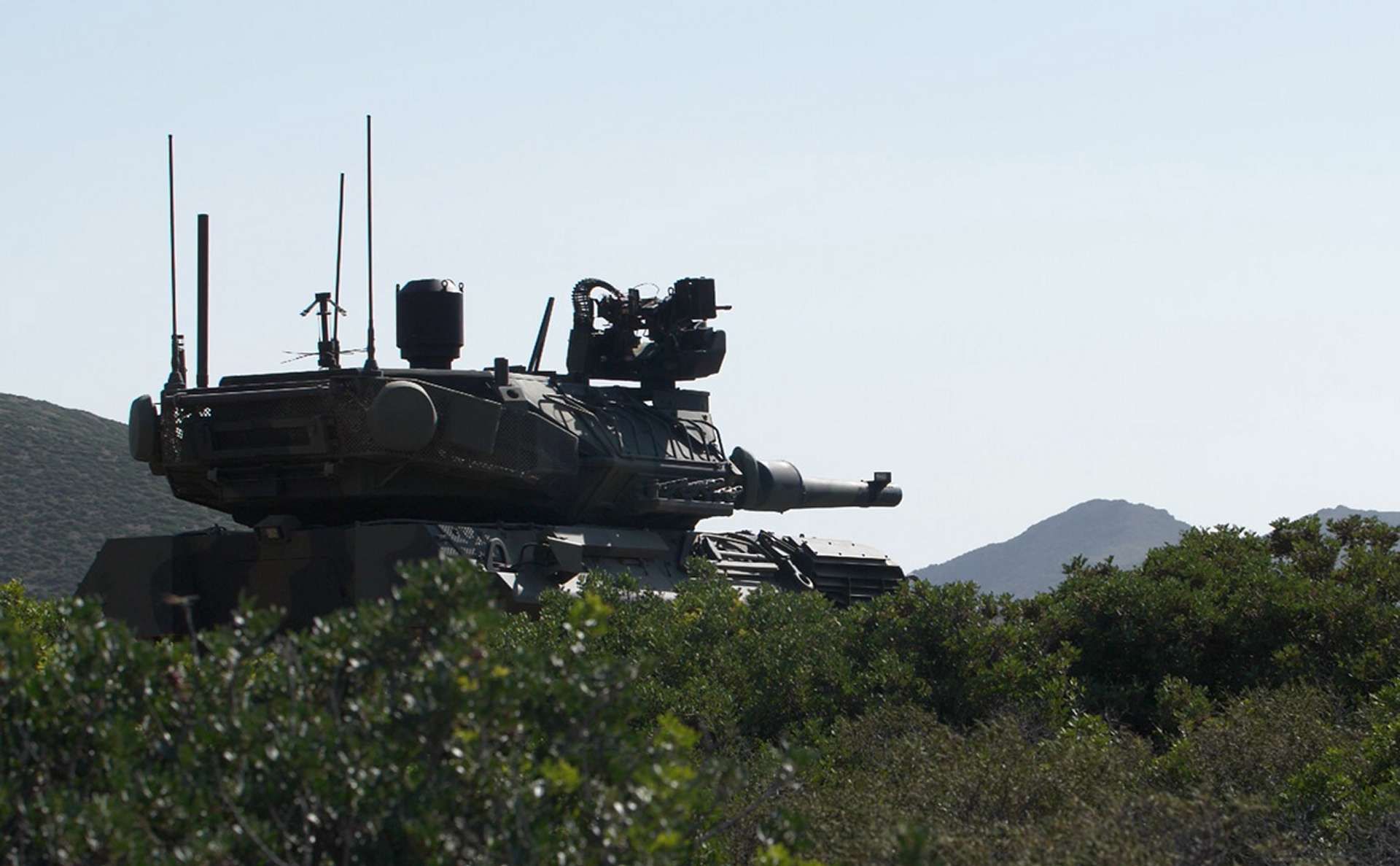Breaking News
Germany lifts embargo on Italian Centauro II anti-tank vehicles for Brazil.
As reported by A-129 Mangusta on July 27, 2024, Germany has lifted the restrictions regarding the transit and shipment by sea of the first two Italian Centauro II anti-tank vehicles destined for the Brazilian Army. The second vehicle remains in Italy but will soon be sent to Germany for delivery. This decision aims to accelerate the delivery process, addressing the lack of available Italian ships for transport. Additionally, the second vehicle is expected to be routed through Antwerp in Belgium.
Follow Army Recognition on Google News at this link

These Centauro II anti-tank vehicles were in Germany primarily for final assembly and integration processes, due to collaborative production efforts between Italian defense manufacturers and German companies. (Picture source: Twitter/A-129 Mangusta)
These Centauro II anti-tank vehicles were in Germany primarily for final assembly and integration processes, due to collaborative production efforts between Italian defense manufacturers and German companies. Germany's role includes producing and integrating key components and subsystems, such as electronics, communication systems, and possibly aspects of the drivetrain and armament. The vehicles undergo final assembly and testing in Germany to meet the highest European and international military standards before export.
Germany's position in the European defense supply chain facilitates the production and assembly of the Centauro II. Components are manufactured in various countries and then assembled in Germany, which offers advanced quality assurance and testing capabilities. This process, however, subjects the entire project to German export control laws. Any involvement of German technology or facilities necessitates compliance with German arms export regulations, one of the strictest arms export control systems in the world.
Germany aims to maintain its international reputation as a responsible arms exporter and requires that all potential arms exports undergo a thorough evaluation to ensure that the recipient country’s human rights record is satisfactory. In this case, Germany has expressed concerns about Brazil's human rights situation, particularly the potential for the Centauro II vehicles to be used in ways that could contribute to internal repression or human rights abuses. Germany has previously blocked or restricted arms exports to countries where there is a high risk of misuse or where the geopolitical context raises significant concerns, such as the 28 Guarani 6x6 APCs purchased by the Philippines.

If these two Centauro II vehicles meet the required standards, Brazil plans to purchase an additional seven vehicles for doctrinal experimentation. The long-term goal includes procuring 89 more vehicles by 2037, totaling 96 vehicles at a cost of BRL 3.3 billion (approximately $582,390,600). (Picture source: CIO)
Brazil's plan to modernize its armored cavalry brigades involves acquiring Centauro II 8×8 wheeled fire support armored vehicles. The Brazilian Army, with its current inventory of 2,244 armored vehicles, aims to enhance its capabilities through this modernization. The initial two Centauro II vehicles were produced in 2023 and are scheduled to arrive in Brazil in mid-2024 for final technical and operational evaluations.
If these vehicles meet the required standards, Brazil plans to purchase an additional seven vehicles for doctrinal experimentation. The long-term goal includes procuring 89 more vehicles by 2037, totaling 96 vehicles at a cost of BRL 3.3 billion (approximately $582,390,600). This effort is part of a broader strategic program to develop Brazil’s defense technological and industrial base.
The Brazilian contract for Centauro II anti-tank vehicles was finalized following a selection process in 2022, where the Centauro II was chosen over competitors from General Dynamics Land Systems-Canada and NORINCO. The initial contract with the Iveco-Oto Melara Consortium includes the production of two vehicles, with further contracts depending on the successful evaluation of these initial units. This contract reflects Brazil’s commitment to modernizing its armored vehicle fleet.

The Centauro II, a modernized version of the Centauro I anti-tank vehicle, is armed with a 120/45 mm gun, with an option to interchange it with a 105/52 mm gun. (Picture source: CIO)
Brazilian Army personnel are currently training in Italy to ensure proper operation and maintenance of the new vehicles. The first two vehicles will feature a pintle mount instead of a remote weapon station, with discussions about adding the Brazilian REMAX 4 remote weapon station in future tranches armed with either a 7.62 mm or 12.7 mm machine gun. The strategy includes comprehensive training and logistical support to maximize the vehicles' effectiveness.
The Brazilian configuration of the Centauro II, a modernized version of the Centauro I, includes a stabilized 120/45 mm low-recoil smoothbore high-pressure gun, a coaxial FN MAG58 7.62 mm machine gun, a second FN MAG 58 mounted on a pintle weapon mount, and eight 76 mm smoke grenade dischargers. The vehicle features advanced situational awareness systems, including day and thermal cameras, and a command and control package comprising the L3Harris Falcon III VHF radio set, a Thales SOTAS M3 intercom, and an SGB battle management system (BMS) to enhance reconnaissance and combat capabilities.
The Centauro II for Brazil has a crew of four and is manually loaded, with an autoloader option available. The vehicle is powered by an Iveco Vector V8 EURO III-compliant engine developing 720 hp, coupled with a 7HP902 automatic gearbox with seven forward and one reverse gear. The Centauro II is equipped with independent hydro-pneumatic suspension and a digital tire pressure control system (CTIS) for operation across various terrains.
In terms of protection, the Centauro II includes ballistic armor with a high-hardness monocoque steel hull and modular armor capable of defending against various threats. Crew safety is enhanced by improved ammunition storage partitioning and modern NBC protection systems. The vehicle's combat equipment includes a radio system, digital intercom, integrated Battle Management System, and anti-RC-IED capabilities.


























